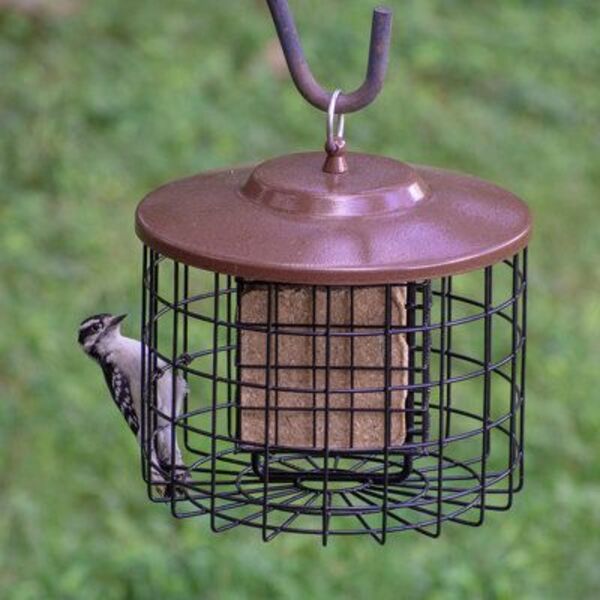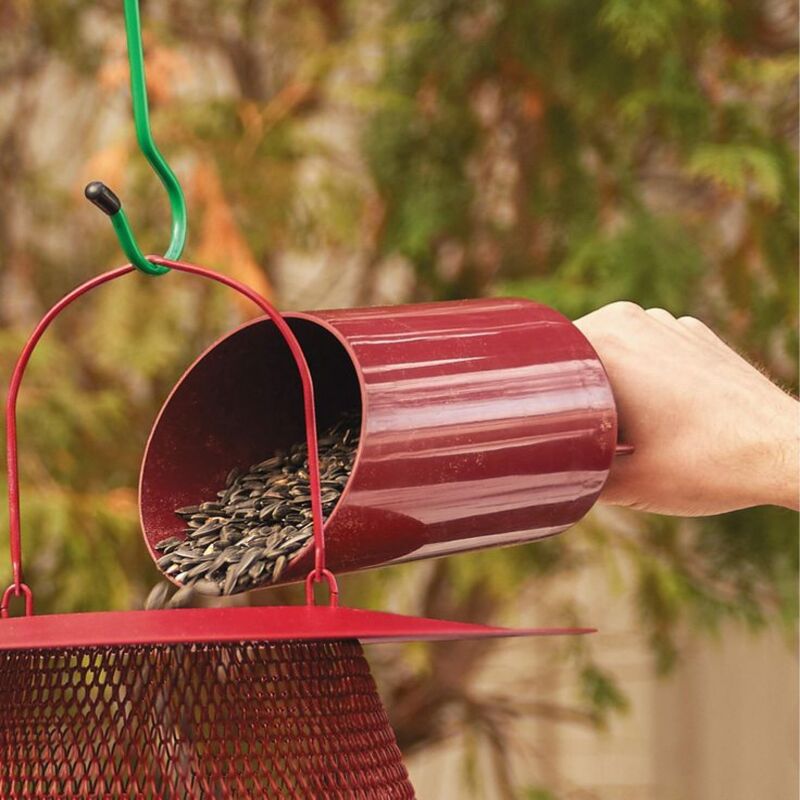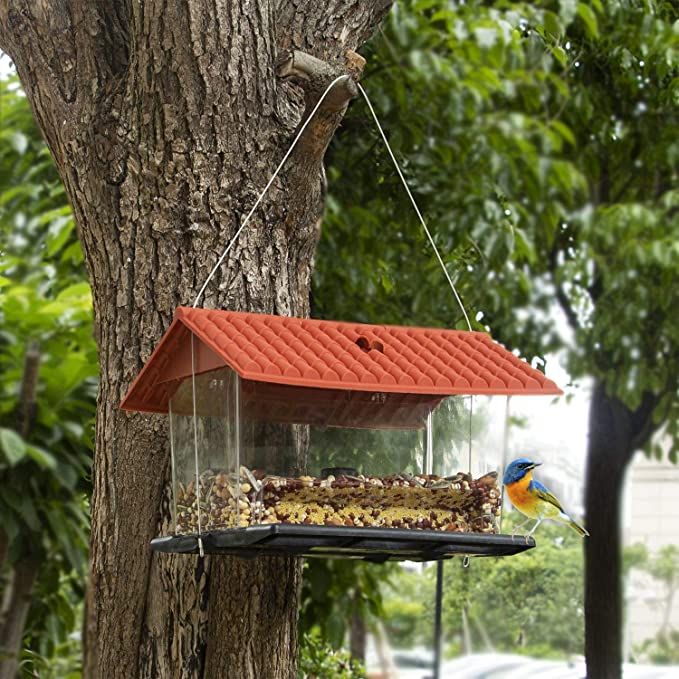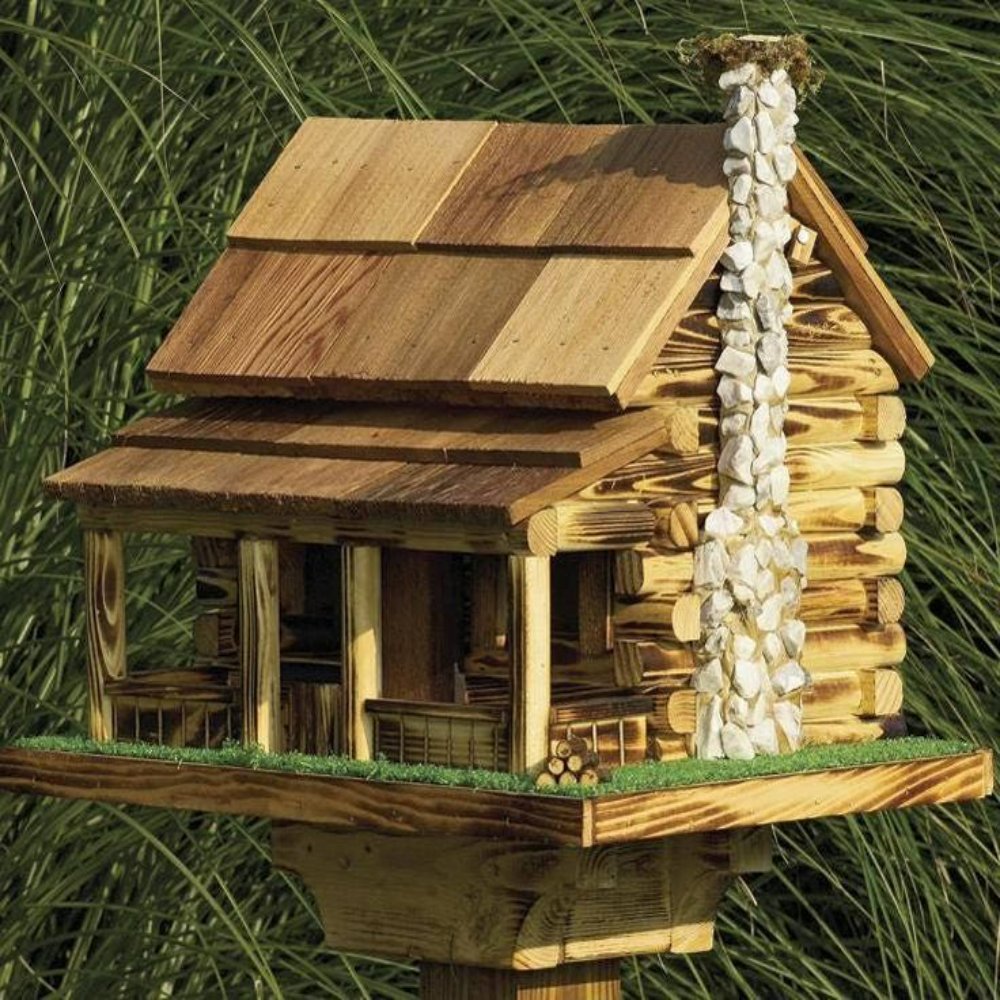Introduction to Bird Feeding and Squirrel Dilemmas
Everyone who enjoys bird watching and feeding knows the frustration of squirrels. These agile creatures often outsmart simple feeder defenses, turning bird-watching into a constant battle. Yet, bird feeding is a gratifying hobby that brings us closer to nature, provides birds with a reliable food source, and offers endless entertainment.
In urban and suburban settings, squirrels can be particularly problematic. They are known for their persistence, intelligence, and acrobatic feats. Squirrels can jump long distances, balance on the thinnest of wires, and climb smooth surfaces. For them, bird feeders are often an easy target for a hearty meal. How to keep squirrels out of bird feeder?
Solutions range from strategic feeder placement to using specially designed feeders that baffle squirrels. In understanding the dilemma, it becomes a game of strategy. One must employ multiple tactics to successfully squirrel-proof a bird feeder and ensure that the birds – not the squirrels – get to enjoy the feast.

Strategic Feeder Placement: The 5-7-9 Rule
Strategic placement of bird feeders is crucial in the battle against squirrels. The 5-7-9 rule offers a guideline for optimal feeder positioning. To start, ensure your bird feeder hangs at least 5 feet above the ground. This height is typically beyond a squirrel’s jumping reach. Keep the feeder at least 7 feet away from structures like trees or decks. Squirrels possess incredible leaping capabilities, and this distance helps prevent them from jumping onto the feeder. Finally, avoid hanging the feeder below anything that a squirrel could descend from. Ensure there is no overhanging branches or surfaces less than 9 feet above the feeder.
Using a thin wire to suspend the feeder can add an extra layer of protection. Squirrels find it challenging to balance or climb down thin wires. This method, however, requires nearby trees or structures appropriately spaced. Poles can also be effective if they adhere to the 5-7-9 measurements. Be mindful, though—squirrels may climb poles unless deterrents are in place.
Remember, these guidelines do not guarantee squirrel-proof feeders. But, they provide a solid foundation on which to build more deterrent strategies. These measures, combined with the squirrel-resistant strategies discussed later, increase the chances of keeping squirrels out of your bird feeder.
Utilizing Squirrel Baffles and Spinners
When dealing with smart, agile squirrels, sometimes the best defense is a good offense. Squirrel baffles and spinners are great tools to keep these clever critters at bay. They work by creating physical barriers that are tough for squirrels to navigate.
Squirrel Baffles
A squirrel baffle is a dome or cone-shaped attachment that creates a slippery surface. You can place it above or below the bird feeder. Its smooth, sloping sides confuse and prevent squirrels from getting a grip. This way, squirrels slide off before reaching the bird seeds. Baffles come in various shapes, like the wrap-around, torpedo, and dome types. Each design suits different setups. These devices are humane. They ward off squirrels without causing harm.
Spinners
Spinners offer a more dynamic approach. They add a moving part to your feeder setup. When squirrels attempt to climb, the spinner rotates. This makes it impossible for them to hold on. They are left spinning until they drop off. It’s essential that any spinning device used is safe for squirrels. The goal is to discourage, not harm.
Using these devices helps ensure that seeds are reserved for the birds. They can deter squirrels from making your bird feeder their personal snack bar. Integrating baffles and spinners into your bird-feeding strategy can save you time, money, and frustration. You also protect your feathered visitors’ food from squirrel invasions.

Choosing Squirrel-Resistant Bird Seeds
When selecting seeds for bird feeders, aim for types that squirrels dislike. Adding safflower seeds, which are not favored by squirrels, can deter them while still attracting a variety of birds. Nyjer seeds, also known as thistle seeds, and white proso millet are other great options. These seeds are less appealing to squirrels, yet still provide nutritious snacks for many bird species.
Incorporating these seeds into your bird feed mix could reduce the presence of squirrels. While some birds may initially be hesitant to try new seeds, patience is key. Over time, birds will adapt and enjoy these squirrel-resistant options.
Remember, no single method is foolproof. Consistently using a blend of unpopular squirrel seeds will lessen the likelihood of these agile animals raiding your feeders. For even better results, combine this tactic with the strategic placement and squirrel deterrents previously discussed.
Keep in mind that trial and error is part of the process. Monitor your feeder and adjust the seed mix if necessary. The aim is to find the balance that pleases the birds but leaves the squirrels looking elsewhere for food.
Adding Spices: Capsaicin-Infused Bird Feed Solutions
Capsaicin-infused bird feed can be a game-changer. This spicy compound is found in chili peppers. While it affects mammals, birds hardly notice it. It’s an effective way to deter squirrels. They dislike the heat from capsaicin. Adding it to bird seed can keep them away. The best part? It doesn’t harm the squirrels or the birds.
How to Use Capsaicin in Bird Feed
To use capsaicin, mix it with bird seed. Start with a small amount. You can increase it if squirrels persist. Monitor the feeder to see the results. The birds will enjoy the feed without disruption. This method integrates well with others, like strategic placement and baffles.
Capsaicin Products for Feeders
There are many capsaicin products. they come in ready-made seed mixes or as an oil to add to seeds. Both are available at most bird feeding stores. Online options are also plentiful. Just choose the product that fits your needs. Read the instructions carefully and use as directed.
In summary, capsaicin-infused bird feed could be your solution. Squirrels stay away and birds continue to visit. It’s a smart addition to your squirrel-proofing strategy. Combined with other methods, it greatly improves your chances of success.

Alternative Food Sources: Decoy Feeding Stations for Squirrels
Creating separate feeding stations for squirrels may sound counterintuitive. But, sometimes the best way to keep squirrels away is to feed them. Provide an alternative food source. This can divert their attention from bird feeders. Decoy squirrels stations work by offering squirrels their favorite snacks. Like nuts and corn, away from where birds feed. This can reduce their temptation to raid bird feeders.
Setting Up Decoy Stations
To set up a decoy, find a spot in your yard far from bird feeders. Use sturdy materials resistant to squirrel damage. Though simple platforms work, more engaging designs are available. Some mimic picnic tables or small benches, providing squirrels with a designated dining area.
What to Offer
Fill the stations with treats squirrels love. Peanuts, cracked corn, and sunflower seeds are good choices. Avoid foods harmful to them, like chocolate or salty snacks. Regularly refill the stations. This ensures squirrels stay interested and keep their distance from bird feeders.
Signs of Success
You’ll know your decoy station is working when you notice fewer squirrels around your bird feeders. Keep an eye out for a balance where birds can eat in peace. At the same time, squirrels enjoy their designated feeding area. Be ready to adjust the location or offerings at your decoy station as needed. This ensures ongoing effectiveness.
The Roles of Feeder Design and Materials
The design and materials of your bird feeder play crucial roles in deterring squirrels. Choosing the right feeder can make a significant difference in preventing squirrels from accessing the seeds.
Feeder Design
Opt for feeders with specific designs that discourage squirrels. Squirrel-proof feeders often feature weight-sensitive perches or mechanisms that close seed ports under a squirrel’s weight. Some designs come with protective cages small enough for birds to enter but too small for squirrels.
Consider using feeders with spinning mechanisms. These feeders rotate upon contact, making it difficult for squirrels to maintain their grip.
Feeder Materials
Select materials that are tough for squirrels to climb. Smooth surfaces such as PVC or copper are excellent choices. Squirrels find it hard to climb these materials, making them less likely to reach the seeds.
Avoid using wood or metal poles without modifications, as squirrels can climb these easily. Instead, you can apply slippery substances to poles to make them more challenging for squirrels to navigate.
When combined with strategic placement, using the right feeder designs and materials can significantly enhance your efforts to keep squirrels out of your bird feeder.
Conclusion: Combining Strategies for Best Results
To beat squirrels at their own game, combine strategies. Start with the strategic 5-7-9 rule for feeder placement. This alone can make a big difference, but don’t rely on it solely. Add squirrel baffles and spinners to put physical barriers between these agile creatures and your bird feed.
Mix in squirrel-resistant seeds like safflower, nyjer and white proso millet. This may deter squirrels and satisfies your feathered guests. Add spicy capsaicin-infused feeds to repel squirrels without hurting them or the birds. Always introduce new tactics gradually and observe how they affect both the birds and squirrels.
Consider using decoy feeding stations to distract squirrels. Place these away from your bird feeders with treats that squirrels can’t resist. This tactic can redirect their attention and minimize their interest in bird feed.
Choose feeders with smart designs and slippery materials. Look for weight-sensitive mechanisms or protective cages. Avoid wood or metal poles unless modified to prevent squirrel climbing. Apply slippery substances if necessary.
In short, use multiple tactics to keep your bird feed for birds only. Vary your approach and keep squirrels guessing. With patience and persistence, it is possible to enjoy bird watching squirrel-free. Keep experimenting and enjoy the company of your backyard birds!

